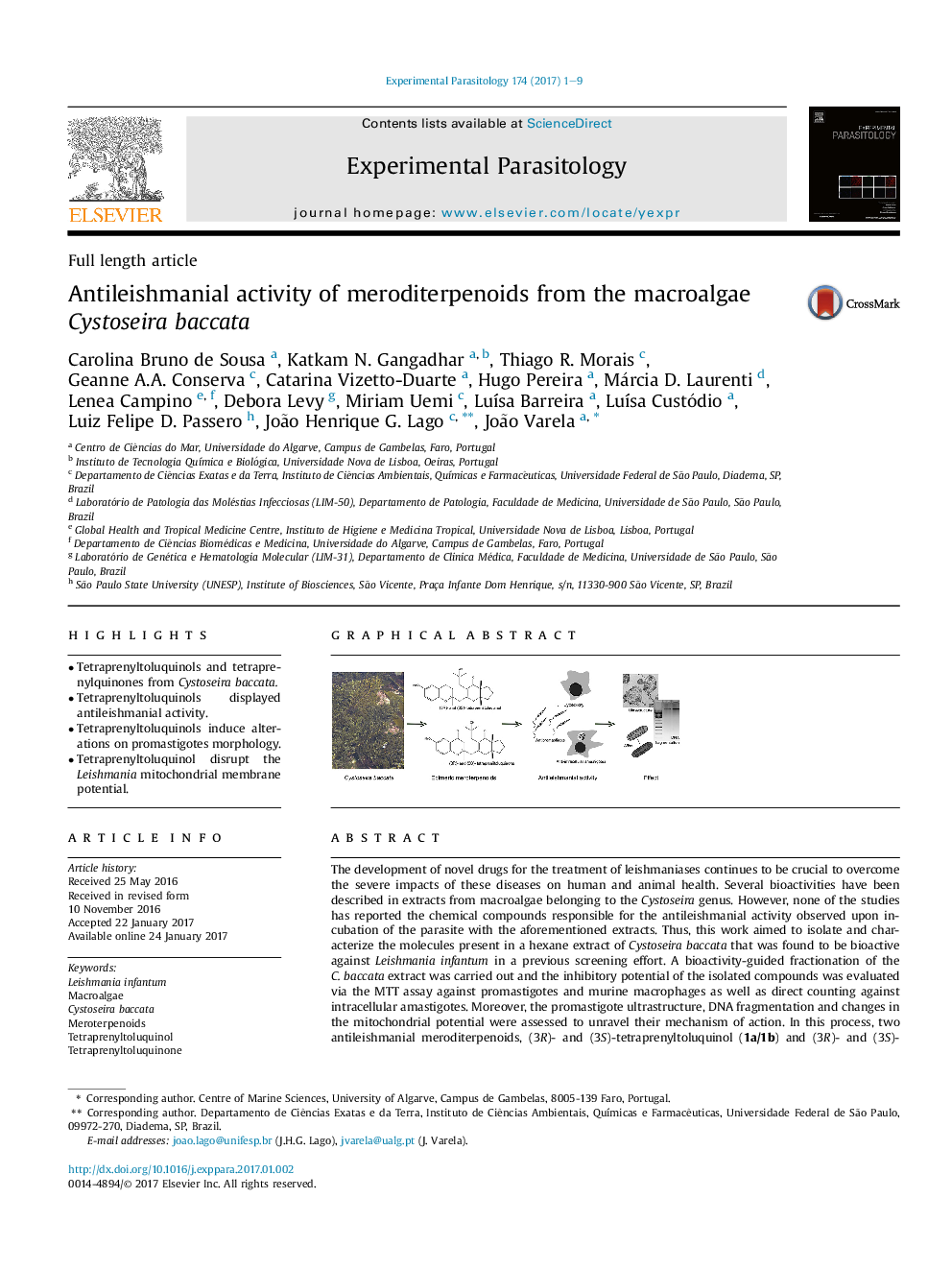| کد مقاله | کد نشریه | سال انتشار | مقاله انگلیسی | نسخه تمام متن |
|---|---|---|---|---|
| 5741159 | 1616991 | 2017 | 9 صفحه PDF | دانلود رایگان |

- Tetraprenyltoluquinols and tetraprenylquinones from Cystoseira baccata.
- Tetraprenyltoluquinols displayed antileishmanial activity.
- Tetraprenyltoluquinols induce alterations on promastigotes morphology.
- Tetraprenyltoluquinol disrupt the Leishmania mitochondrial membrane potential.
The development of novel drugs for the treatment of leishmaniases continues to be crucial to overcome the severe impacts of these diseases on human and animal health. Several bioactivities have been described in extracts from macroalgae belonging to the Cystoseira genus. However, none of the studies has reported the chemical compounds responsible for the antileishmanial activity observed upon incubation of the parasite with the aforementioned extracts. Thus, this work aimed to isolate and characterize the molecules present in a hexane extract of Cystoseira baccata that was found to be bioactive against Leishmania infantum in a previous screening effort. A bioactivity-guided fractionation of the C. baccata extract was carried out and the inhibitory potential of the isolated compounds was evaluated via the MTT assay against promastigotes and murine macrophages as well as direct counting against intracellular amastigotes. Moreover, the promastigote ultrastructure, DNA fragmentation and changes in the mitochondrial potential were assessed to unravel their mechanism of action. In this process, two antileishmanial meroditerpenoids, (3R)- and (3S)-tetraprenyltoluquinol (1a/1b) and (3R)- and (3S)-tetraprenyltoluquinone (2a/2b), were isolated. Compounds 1 and 2 inhibited the growth of the L. infantum promastigotes (IC50 = 44.9 ± 4.3 and 94.4 ± 10.1 μM, respectively), inducing cytoplasmic vacuolization and the presence of coiled multilamellar structures in mitochondria as well as an intense disruption of the mitochondrial membrane potential. Compound 1 decreased the intracellular infection index (IC50 = 25.0 ± 4.1 μM), while compound 2 eliminated 50% of the intracellular amastigotes at a concentration > 88.0 μM. This work identified compound 2 as a novel metabolite and compound 1 as a biochemical isolated from Cystoseira algae displaying antileishmanial activity. Compound 1 can thus be an interesting scaffold for the development of novel chemotherapeutic molecules for canine and human visceral leishmaniases studies. This work reinforces the evidence of the marine environment as source of novel molecules.
340
Journal: Experimental Parasitology - Volume 174, March 2017, Pages 1-9